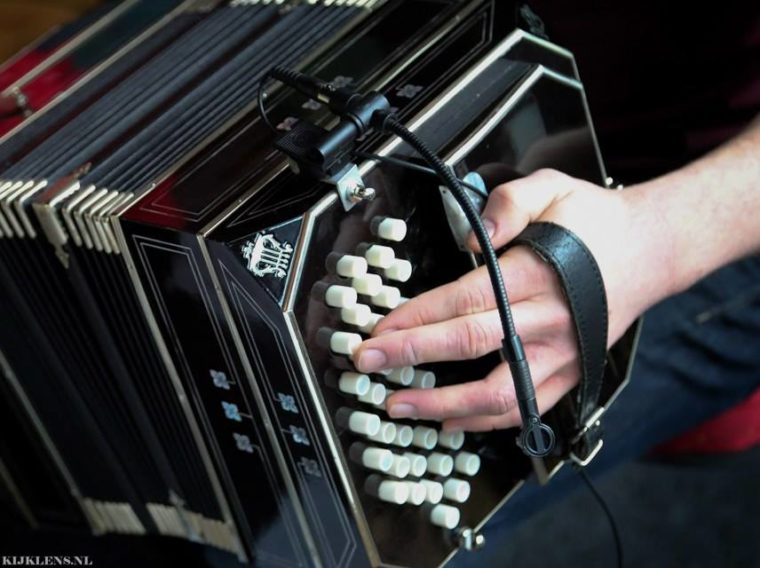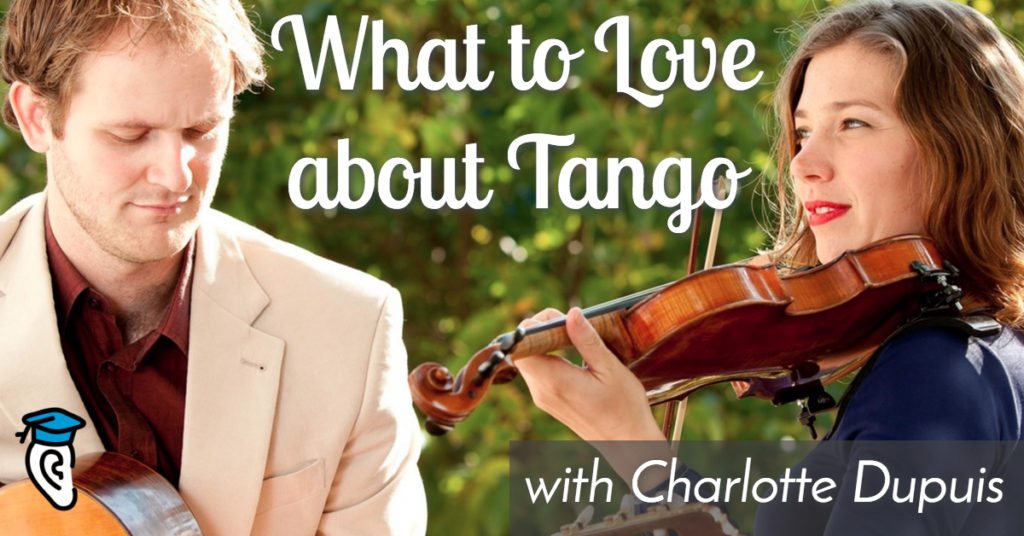Recently we learned how Charlotte Dupuis fell in love with Tango at Milonga Cuartito Azul in Rotterdam, Netherlands. She went on to gain her degree in tango violin. As the saying goes, it takes two to tango – Charlotte met guitarist/pianist Mirek Walton and the Duo Nocturna was born. Today the tango band Nuevo Nocturna can include from two to four members, and is one of Europe’s foremost and most original tango ensembles.
For so many, tango evokes twilight images of romance and mystery. But it’s true musical qualities can remain mysterious as well. This time we asked Charlotte to shed some light on the sometimes-shadowy genre of tango:
The sounds of bandoneon and accordion are very different to me. The accordion has a nice sound and is used for folk music in many European countries. The bandoneon though has a much deeper impact on my feelings than the accordion. The bandoneon can sound sad and melancholic, but also strong and with fire. The bandoneon just talks straight to my heart.

When a bandoneon plays staccato chords in a tango or milonga, the music becomes so powerful, danceable, energetic. When a bandoneon plays long notes in a solo it’s just as if it’s talking about sorrow.
Accordion is a much more common instrument. Not many people in the world play bandoneon. I think it has to do with the difficulty of the instrument. Bandoneon is much harder to master than accordion.
I’m extremely lucky to live in Rotterdam, where it’s possible to study bandoneon at Codarts university. The best bandoneon players and students are my neighbors. For example; Nuevo Nocturna plays with Lysandre Donoso and Andreas Rokseth. They’re among the top bandoneon players in Europe.
In Argentina, there is much folk music, like the chacarera or zamba. Tango is an Argentinean genre all it’s own. Within the tango repertoire, there are four different types of music and each one has its own measure and tempo:
- Vals, moderato 3/4, has a more light character. The dancers mainly step on the first note of the bar – although the more advanced dancers dance varied rhythms.
- Milonga ciudadana, fast 2/4, is fast and joyful. The rhythm is influenced by African music, with the dotted eighth note and a sixteenth note at the beginning of the bar. This rhythm gives a funny, happy character to the music.
- Tango, moderato 4/4, is more serious, melancholic, and passionate in character.
- Milonga campera, a slow 4/4 with a 3-3-2 division in the rhythm of the accompaniment, is the most intimate, sensitive, poetic, and sad music within the tango repertoire.
Our song “Milonga sentimental” is an example of milonga ciudadana:
Tango music has elements of many types of music: Italian, Spanish, Gypsy, Klezmer, African and of course classical European music. I enjoy playing all those types of music. But, in tango all these genres come together and that feels very liberating to me. Tango is a bit of everything. I also like the fact that tango musicians approach the repertoire with creativity. They add their own flavor to arrangements. When I compose a tango, I feel free. I can go many directions:
First of all there are many technical similarities. The instruments that are used, the measures, the form and the language (often Spanish). But apart from these technical similarities, the biggest similarity is that the music is played and sung from the heart.
Tango is still a kind of folk music – even though it can be written down in music notation and be quite difficult to play. The lyrics are usually poems about human emotions and problems.
There are many great tango composers. Some of my favorites are Sebastián Piana, Aníbal Troillo, Osvaldo Pugliese, Juan d’Arienzo, Carlos di Sarli and Astor Piazzolla. Nuevo Nocturna plays their compositions, although we arranged them to create our own sound:
Violin players who I listened to a lot and who I tried to imitate are Fernando Suárez Paz, Elvino Vardaro, Enrique Francini and Julio de Caro. My singing style is influenced by tango singers like Mercedes Simone and Libertad Lamarque.
Astor Piazzolla is definitely a tango composer. Although his music is mostly meant for listening instead of dancing, it always gives me this real tango feeling: passionate, melancholic, energetic:
Of course the sound of Piazzolla’s instrument, the bandoneon, reminds me strongly about tango.
Over the years we have collected our favorite songs and left out the ones we didn’t really like. At the moment we only play repertoire that I really like.
But if I had to choose one song, it would be “Desde el alma“. This is a vals with a beautiful melody and the lyrics have a positive message: “If a love story is over, don’t keep looking at the past and feel hurt, but look forward and you’ll find a new love”.
Usually, tango lyrics about love are more dramatic. For example, about feeling hurt in the present when looking back on a love story that ended badly in the past.
Are looking to for romance? Whether you are a listener, dancer, or musician, the diverse and exciting genre of tango may be your next step. You can find Charlotte Dupuis and her band Nuevo Nocturna online, YouTube, Facebook, and bandcamp. Or maybe step out to your local – or virtual – milonga (tango club) and fall in love with tango for yourself.







